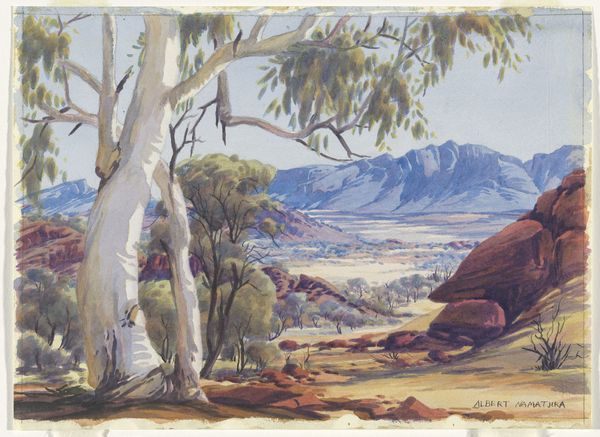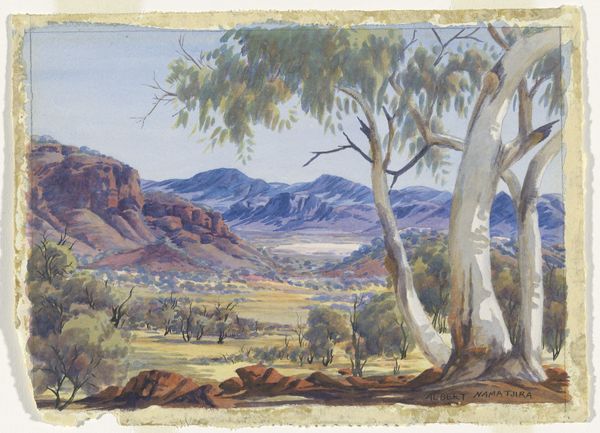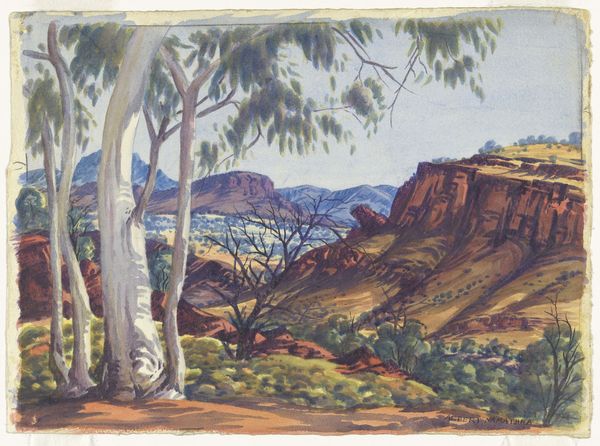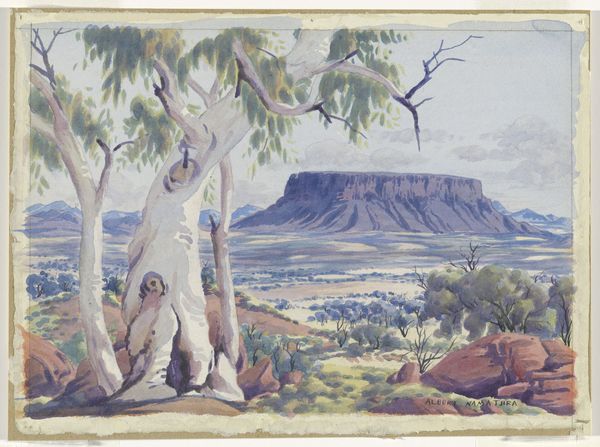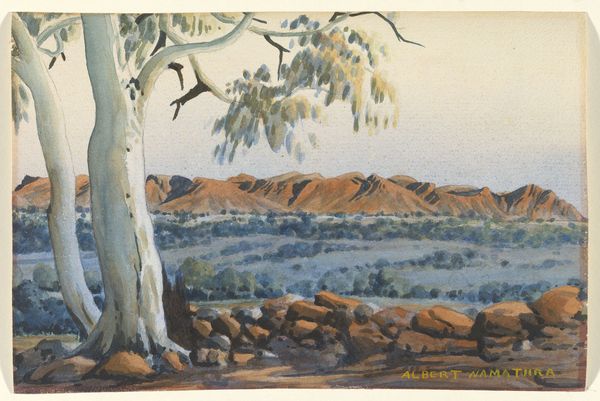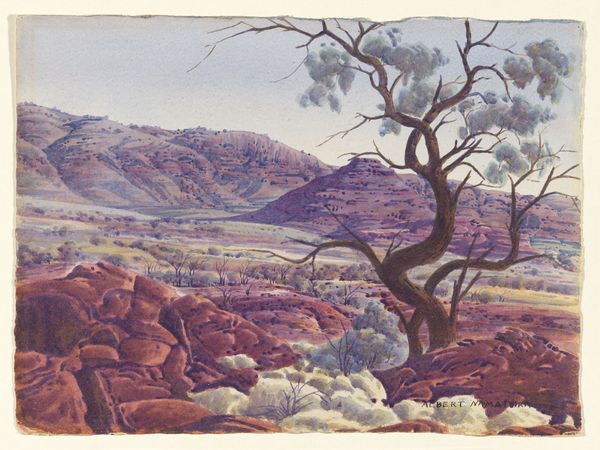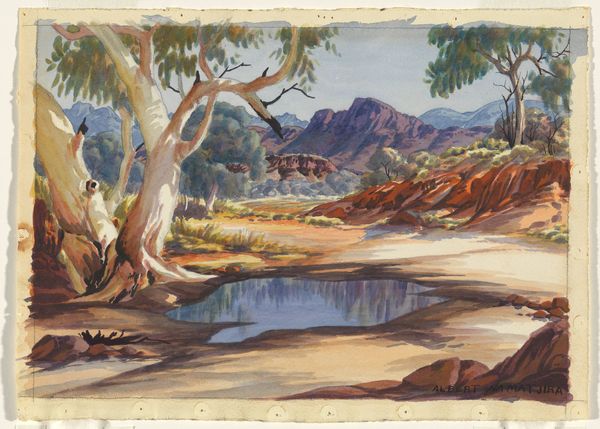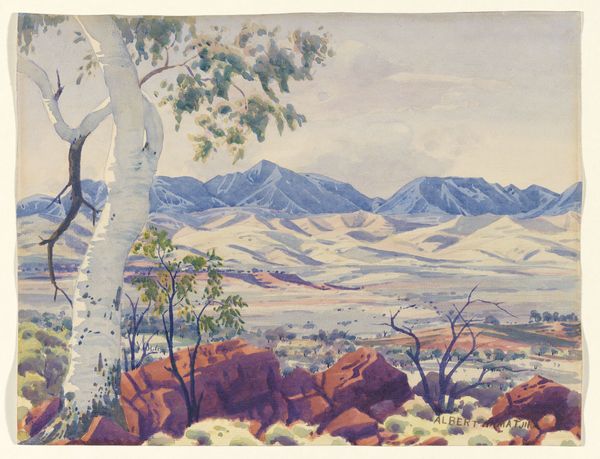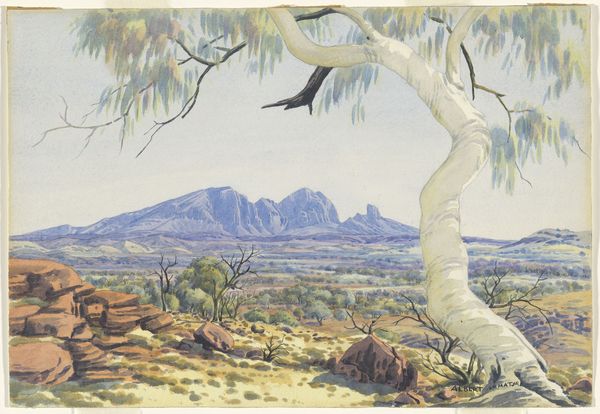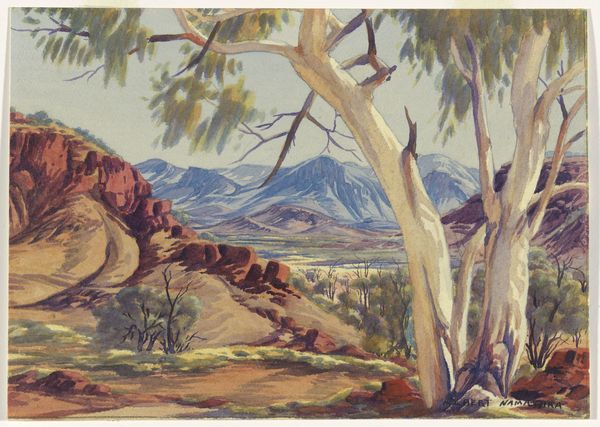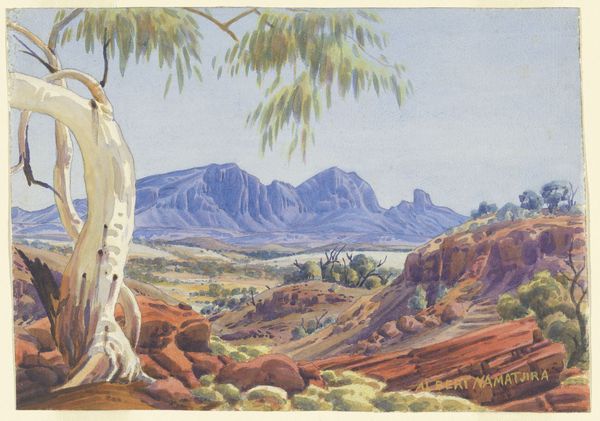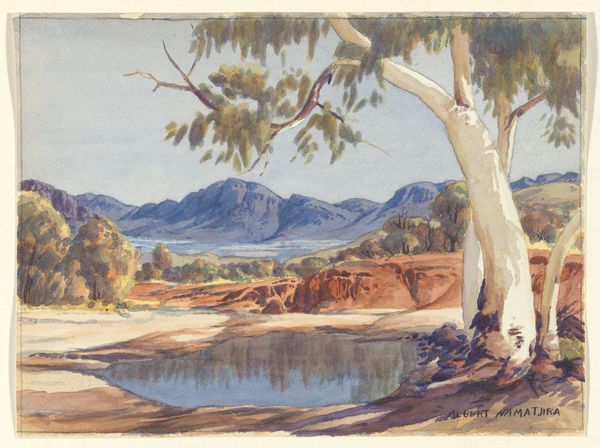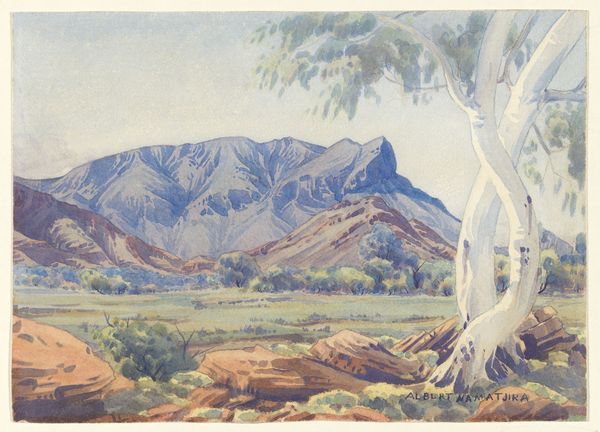
watercolor
#
landscape
#
watercolor
#
watercolour illustration
#
watercolor
Copyright: Albert Namatjira,Fair Use
Curator: Gazing upon "Alice Springs Country" from 1954 by Albert Namatjira, I’m immediately drawn into its embrace. It feels like a snapshot of home. Editor: Immediately, the watercolor painting gives a quiet impression—a study in the contrast between the close, sun-drenched ochres of the foreground and the muted blues that define the distant mountain range. The tree trunks divide the pictorial plane vertically, a structural anchor against the sprawling landscape. Curator: That tree... she’s almost like a sentinel. Watchful, you know? And the land unfurls from those rugged rocks. It makes me think of dreaming when you are walking country. It is deep seeing. The colors speak of something sacred to me. It isn’t just what my eyes see but it speaks directly to my heart. It gives such belonging and connectedness to nature. Editor: Precisely, and this connected use of color draws your attention from a point in the near ground, where Namatjira deploys striking realism, slowly, as your eyes follow upwards, morphing that same detail, dissolving the world before us in atmospheric hazes that abstract the real landscape into feelings of deep, serene, quiet meditation, an escape. The composition subtly reinforces the notion of receding space through strategic color use, as an Indigenous way. Curator: And did he embrace the Western style, no doubt, to paint his home in a way they, too, could understand? There’s always this balancing act, painting between worlds. That weight gives this work all the more feeling for me. Editor: Yes, the work is fundamentally structured around dualities, that dichotomy in cultures you talk of: light versus shadow, warm tones against cool, precision near dissolving to suggestive softness as distances increase. Namatjira gives a lesson in how structural elements may also have symbolism of their own, a visual tool and not merely just pictorial ones, as can be often overlooked by academics. Curator: So much is overlooked, truly! When you learn that this wasn't just art but defiance, resilience shining through. It echoes how much he held to tradition even while using new forms. His paintings, full of stories just like country itself. It fills my senses still. Editor: I couldn't agree more. As you suggested, this careful composition demonstrates how Namatjira was speaking on two different plains to different people, which has to elevate him not just as an Indigenous artist, or landscape painter, but also to an extremely intelligent man in touch with the many dimensions between worlds and peoples.
Comments
No comments
Be the first to comment and join the conversation on the ultimate creative platform.
